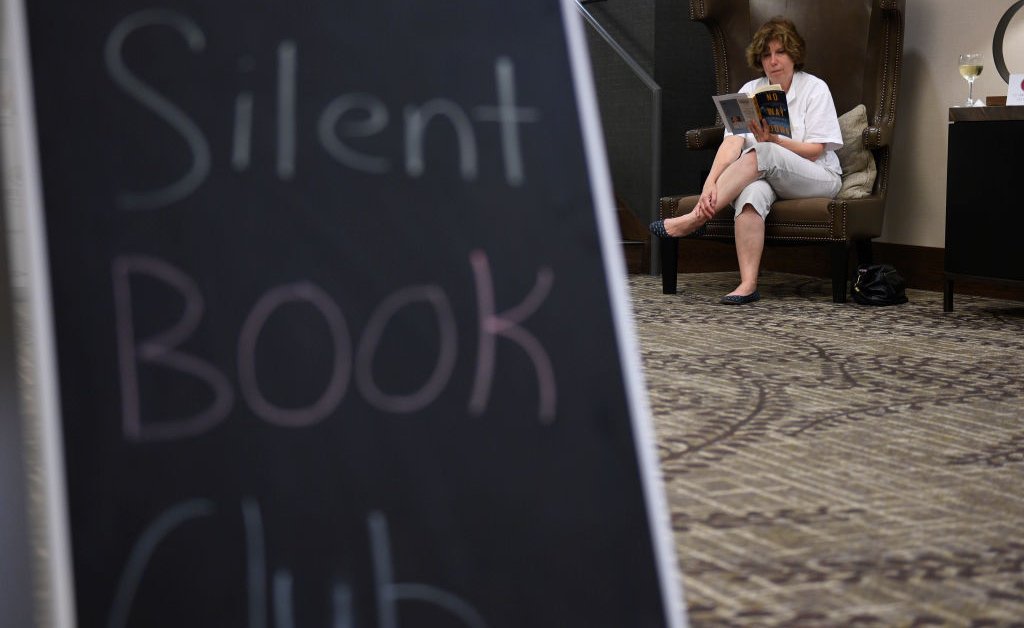It can be easy to go a day without talking to another human, especially if you work remotely. But increasingly, people are avoiding talking to one another when they leave the house, too, thanks to businesses and activities that allow them to request quiet time.
“It’s just the concept of the individual in the chair not having to engage,” says Andrew Edwards, the co-founder of Sunday Salon, a hair studio in Cary, N.C., that allows customers to request a silent hair appointment. “They can sit there and just relax.”
Silent haircuts—in which the stylist is instructed ahead of time not to make small talk—are just one of the silent services becoming increasingly available across the U.S. Both Uber and Lyft allow riders to choose a silent ride, meaning the driver won’t chat with them. (About 13% of Lyft Black and Extra Comfort customers, who are the passengers able to request a quiet ride, did so in 2023, according to the company.) Some massage studios offer a silent massage, in which the therapist won’t try to engage with the client. One Japanese retailer even allows shoppers to choose to hold a blue bag when they enter the store, signaling they don’t want a salesperson to talk to them.
Other stores have given customers easy ways to avoid talking to other people. Ichiran, a restaurant with 85 locations globally, offers individual booths resembling cubicles in which patrons eat alone. The U.S. is the largest market for self-checkout at business, which makes it possible for people to go into a pharmacy or grocery store and avoid having to interact with a clerk. Use of the technology hit record levels in 2023, according to RBR Data Services.
People also appear to be embracing quiet in their free time. There’s the TikTok trend that extols silent walking—just wandering alone, without any podcasts, music, or friends. There are silent book clubs in cities across the country, where people show up with a book they want to read and sit together doing so in silence. (The club’s founders call it “introvert happy hour.’)
Read More: What Donald Trump’s Win Means For Inflation.
“It’s a way for people who might opt for the quiet Ubers to be social in a way that’s welcoming for them,” says Laura Gluhanich, who founded Silent Book Club in San Francisco with Guinevere de la Mare after friends wanted to join their tradition of sitting and reading together in restaurants. There are nearly 1,500 Silent Book Club chapters around the world, she says, up from about 500 last year. (Some participants do chat before or after the reading begins, Gluhanich says.)
Some people want to avoid talking because of how polarized the country has become, says Jessica Methot, a professor of human-resource management at Rutgers University who studies social networks. They don’t want to open their mouths and start an argument they can’t get out of because they’re captive in a chair or car ride.
But we lose something when we embrace solitude and avoid small talk, Melhot says. Research suggests that brief interactions can be energizing, and that most people underestimate the value of conversation. Small talk, which makes up about one-third of our conversations, “is the social glue of our lives and our workplaces,” says Methot, who worries that in an age of remote work, Zoom calls, and silent services, people may be getting lonelier because they don’t have these short, in-person interactions. “We need to look offline for small everyday chats that can boost our everyday experience,” she says.
Read More: Why Sit-Down Chain Restaurants Are Struggling.
But for many, silent services offer a needed respite. Edwards, the salon owner, says his shop started offering silent appointments in 2021, as masks made it difficult for stylists and customers to understand each other. Now people book a silent hair appointment so they can take a nap, or get work done on their laptop, or just stare off into the distance. It’s also been popular with people who might have a language barrier and get stressed at the idea of making small talk with a relative stranger, Edwards says.
Edwards says he initially didn’t know how the experiment would work—he believes that half of a stylist’s job is cutting hair, and the other half is talking to people. But he says clients seem to like the idea. “We’re always on the move, getting called and texted and emailed,” he says. “Sometimes it’s good to take a break.”






